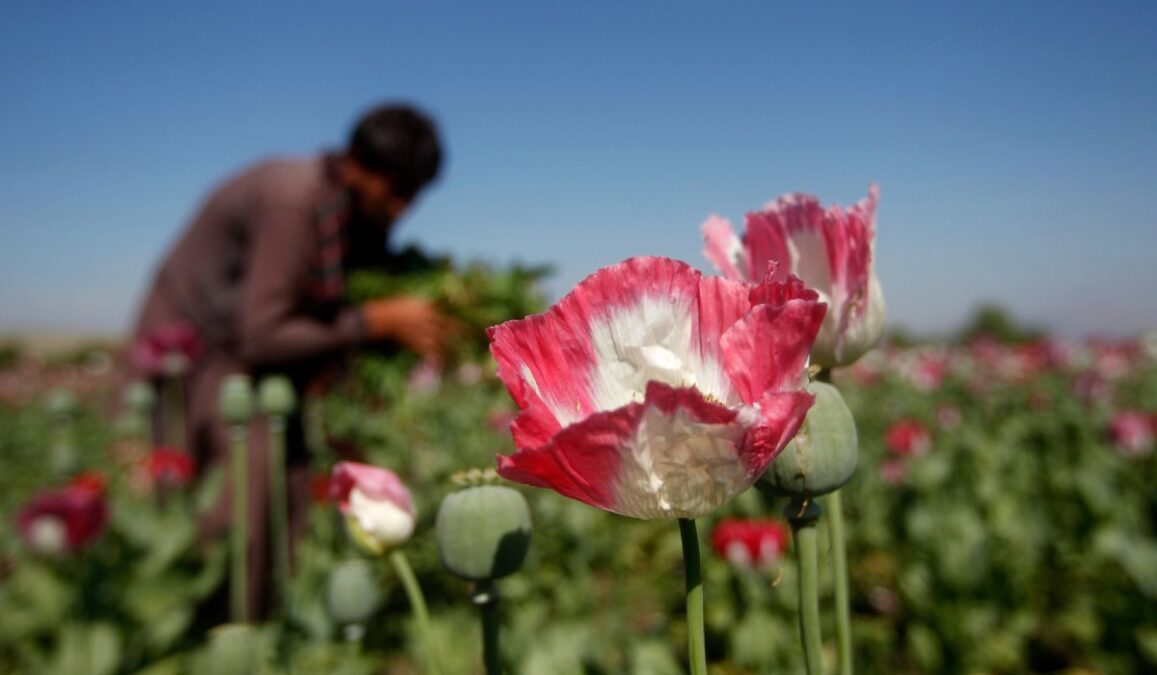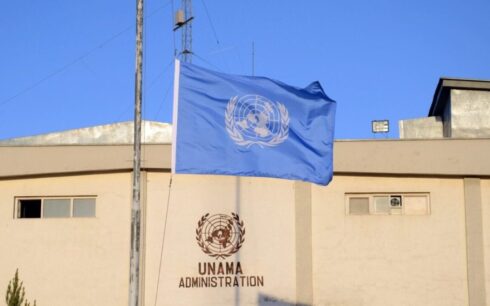The United Nations’ annual World Drug Report has painted a grim picture of the narcotics situation worldwide and noted Afghanistan continued to account for the majority (80 percent) of global illicit opium production in 2022.
While global opium production remained high at 7,800 tons in 2022, which was mainly driven by high levels of production in Afghanistan, the Taliban’s ban this year on poppy cultivation “may have an impact on the 2023 opium harvest there,” read the UN Office on Drugs and Crime’s (UNODC) annual report, which was released Monday.
“The benefits of a possible drastic reduction in illicit opium cultivation in Afghanistan in 2023 will be global but will be at the expense of many farmers in the country who do not have alternative means of income generation. Shared responsibility calls for donors, in particular those that will benefit most from reduced trafficking of Afghan heroin, to urgently provide support for the people in rural areas of Afghanistan to develop livelihoods away from illicit opium cultivation,” the report noted.
Changes in opium production in Afghanistan will have implications for opiate markets in virtually all regions of the world, read the report adding that the market for methamphetamine manufactured in Afghanistan is expanding to South-West Asia and beyond.
“Methamphetamine use has risen in Afghanistan in recent years and accounts suggest that use of methamphetamine and “captagon” tablets is rising in South-West Asia and countries in the Gulf.
The report went on to state that methamphetamine is the main drug of concern in East and South-East Asia, whereas opiates, in particular opium and heroin, predominate in South-West Asia and in South Asia, and “captagon” in the Near and Middle East.
The UN also stated that there are indications that methamphetamine manufacture has increased in Afghanistan in recent years. “Afghanistan is also a major producer of methamphetamines in the region, and the drop in opiate cultivation could drive a shift towards synthetic drug manufacture, where different actors will benefit,” the UN noted.
However, the report warned of converging crises as illicit drug markets continue to expand.
New estimates of people around the world who inject drugs are higher than previously estimated as treatment services and other interventions fall short, including for record numbers of displaced people due to humanitarian crises.
New data put the global estimate of people who inject drugs in 2021 at 13.2 million, 18 percent higher than previously estimated. Globally, over 296 million people used drugs in 2021, an increase of 23 percent over the previous decade. The number of people who suffer from drug use disorders, meanwhile, has skyrocketed to 39.5 million, a 45 percent increase over 10 years.
The World Drug Report 2023 also highlights how social and economic inequalities drive – and are driven by – drug challenges; the environmental devastation and human rights abuses caused by illicit drug economies; and the rising dominance of synthetic drugs.
The demand for treating drug-related disorders worldwide remains largely unmet, according to the report. Only one in five people suffering from drug-related disorders were in treatment for drug use in 2021, with widening disparities in access to treatment across regions.
Reacting to the findings of the report, UNODC Executive Director Ghada Waly said: “We are witnessing a continued rise in the number of people suffering from drug use disorders worldwide, while treatment is failing to reach all of those who need it. Meanwhile, we need to step up responses against drug trafficking rings that are exploiting conflicts and global crises to expand illicit drug cultivation and production, especially of synthetic drugs, fueling illicit markets and causing greater harm to people and communities.”





